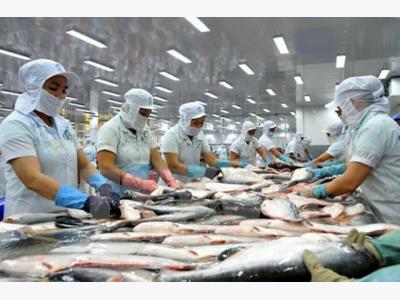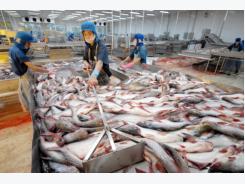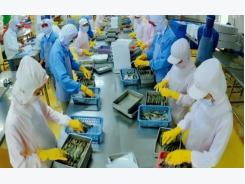US raises bar on seafood imports to curb illegal fishing, fraud

The US Department of Commerce (DOC) has announced the establishment of a new program that will trace specific fish and fish products from harvest to entry into the US markets.
The program is necessary said the National Oceanic and Atmospheric Administration (NOAA), an agency of the DOC, to protect the US national economy, global food security, and the sustainability of the world’s shared ocean resources.
NOAA Fisheries will administer the new – Seafood Import Monitoring Program – aimed at further curbing illegal, unreported and unregulated fishing practices and identifying misrepresented seafood imports before they enter the US market.
The program requires that importers report information and maintain records about the harvest, landing and chain of custody of imported fish and fish products for certain priority species identified as especially vulnerable to fishing and seafood fraud.
Further, the NOAA noted that the program will eventually expand to include all species of fish and seafood imported into the US market.
“As a global leader in sustainable fisheries management and seafood consumption, the US has a responsibility to combat illegal practices that undermine the sustainability of our shared ocean resources,” said Dr Kathryn Sullivan, NOAA administrator.
“We designed this program to further ensure that imported seafood is legally harvested and truthfully represented, with minimal burden to our partners.”
This rule, she continued, is a critical step forward in combating illegal, unreported and unregulated fishing practices and seafood fraud.
It sends an important message to the international seafood community that if they are open and transparent about the seafood they catch and sell across the supply chain, then the US markets are open for their business, said Catherine Novelli.
Ms Novelli, who serves as the Under Secretary of State for Economic Growth, Energy, and the Environment at the US Department of State noted that the rule will build on similar global efforts and will provide confidence to US consumers in the seafood they eat.
She added that it will also level the playing field for honest fishers across the world who play by the rules.
The US will use the existing International Trade Data System to collect seafood catch and landing documentation for the priority seafood species. This data system is the US government’s data portal for all imports and exports.
January 1, 2018, is the mandatory compliance date for most priority species listed in the rule. Implementation of these rules for farmed shrimp and abalone will be effective at a later date to be announced.
NOAA and the Food and Drug Administration (a federal agency of the United States Department of Health and Human Services) have committed to working together to identify potential pathways to close these data gaps through food safety authorities at the FDA.
The Presidential Task Force on Combating IUUFishing and Seafood Fraud, co-chaired by the Departments of Commerce and State, called for the formation of this program.
NOAA sought public comment for the proposed design of this program, and the final rule reflects feedback from international partners, the fishing and seafood industries, trade and consumer sectors and conservation community.
The list of priority seafood species includes abalone, Atlantic cod, blue crab (Atlantic), dolphinfish (mahi mahi) grouper, king crab (red), Pacific cod, red snapper, sea cucumber, sharks, shrimp, swordfish, and tuna (albacore, bigeye, skipjack, yellowfin and bluefin).
Related news
Tools

Phối trộn thức ăn chăn nuôi

Pha dung dịch thủy canh

Định mức cho tôm ăn

Phối trộn phân bón NPK

Xác định tỷ lệ tôm sống

Chuyển đổi đơn vị phân bón

Xác định công suất sục khí

Chuyển đổi đơn vị tôm

Tính diện tích nhà kính

Tính thể tích ao



 Solutions sought for $10b shrimp plan
Solutions sought for $10b shrimp plan  Ca Mau develops ecological crab farming
Ca Mau develops ecological crab farming